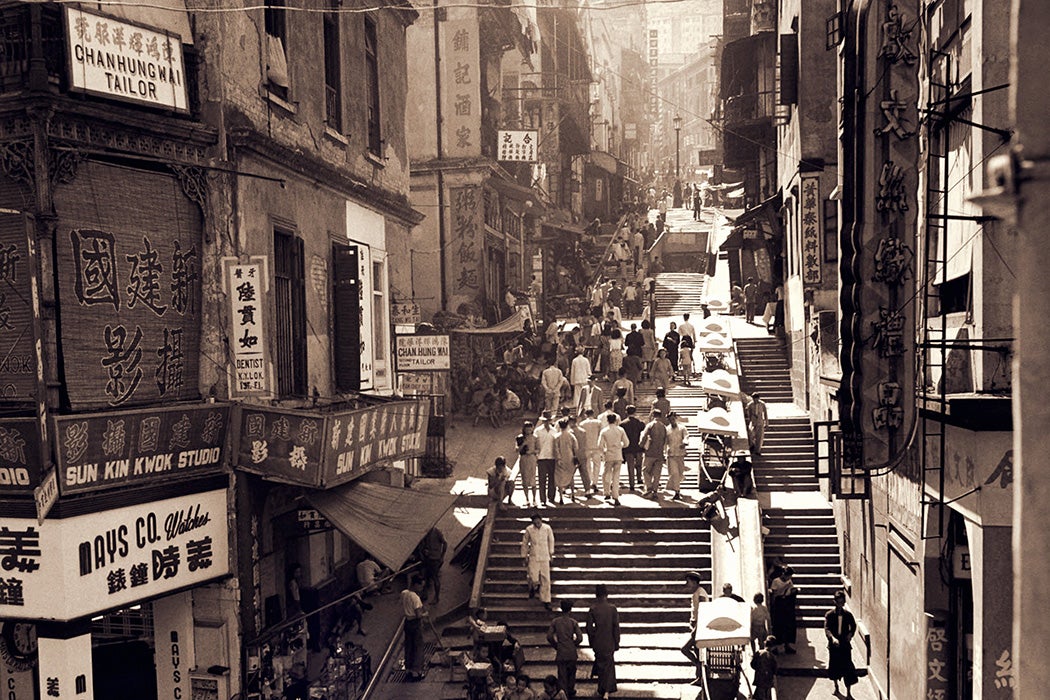Hong Kong, with its 7.5 million people spread out across 400 square miles, is one of the most densely populated places on Earth. In 1945, after four years of Japanese occupation, there were only 600,000 people living there. What happened?
The short answer is that World War II depopulated Hong Kong. A British crown colony, Hong Kong was invaded on December 8, 1941. This was the same day as Pearl Harbor attack, only across the dateline. “As a result of either voluntary escape or forced expulsion by the Japanese occupiers, as many as one million Chinese left for the mainland,” writes the historian Chi-Kwan Mark about this period. (“Hong Kong” is both the name of an island and the whole administrative area of Hong Kong, part of which is on the mainland of China, so it’s conventional to refer to the rest of China as the “mainland.”)
After the war, many of these people returned home. However, there were also many thousands of refugees from the civil war between the Communists and Nationalists who crossed the border to Hong Kong. When the People’s Republic of China (PRC) was declared in 1949, even more refugees streamed into Hong Kong. By 1956, Hong Kong had a population of 2.5 million, and one third of them were refugees. Mark’s historical work tells the story of how they were absorbed and integrated into the British Crown Colony.
It’s a story that can’t be separated from its international situation. The British, the PRC, the Nationalists (entrenched on Taiwan after their defeat on the mainland), the U.S., and the U.N. were all players: “The Cold War powers saw the refugees within the context of their foreign policy objectives and rivalries.” Refugees, “political immigrants,” and “escapees” were all terms used for the displaced people in Hong Kong. Whatever they were called, there were a lot of them. British authorities called it “a problem of people.” Mark writes:
Simply put, the problem was about the consequences of excess population on finance, housing, education, medical services, social welfare, industry, commerce, and even political relations and the law.
Riots in 1956 between Communist and Nationalist factions left 50 dead. That was another impetus to integrate the refugees into Hong Kong’s social and cultural fabric. Mark writes “it became clear that the refugees were coming to stay and their full integration into the community was the only solution.” The World Refugee Year (1959-1960) gave a “pretext” for British and American funding to get involved. The economy was the real engine, however: the colony’s “export-orientated labour-intensive industrial economy began to take off.” Rapid industrialization was the “key solution to the Problem of People” said a Colonial Secretary, who Mark quotes.
New settlement estates, schools, community centers, medical facilities, and other social services were built as the economy powered up. Taxes from trade funded the absorption of the refugees.
Weekly Newsletter
Today, as a capital of international finance and culture, Hong Kong is a global city. This has put it at odds with its much larger neighbor. After the end of the Crown Colony in 1997, Hong Kong became a part of China, as a “special administrative region,” one with its own currency, government, and economic system. But the city’s relationship to the authoritarian state next door is fraught.
Popular demonstrations against the diminution of democracy have been rocking Hong Kong for weeks now. Moving displays of crowds singing “Glory to Hong Kong,” which has become the virtual anthem of the community, suggests a population with a unique sense of history and place. Their historical situation reminds one of the familiar Latin phrase, e pluribus unum: out of many, one.







